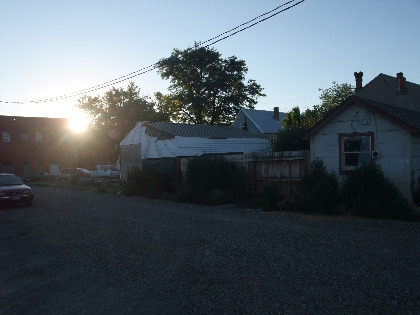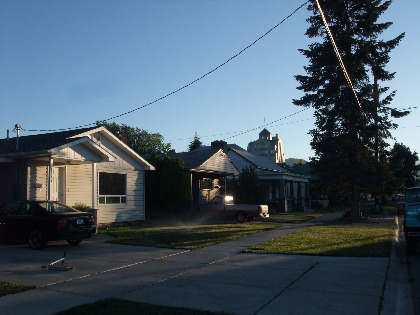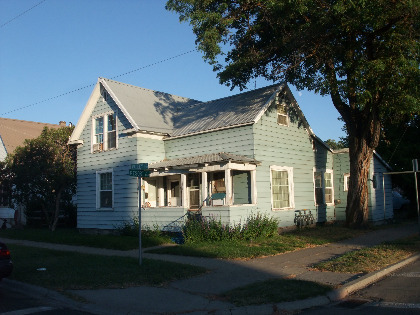
After panning for gold and touring a Dredge in Sumpter Valley, we ended Wednesday in Baker City, Ore.
We toured the Geiser Grand Hotel, where proprietor Barbara Sidway and local historian Gary Dielman talked about this city’s place in Western history and the many immigrants who arrived during the 19th century to find what everyone always wants – gold.
That gold rush gave birth to a Chinatown which existed from about the 1870s to the early 1940s, Dielman said. The 1870 federal census showed that there were 674 Chinese residents in Baker County, he said.
During these decades, Chinese also worked in helping to build the railroad, dig ditches and work as cooks at mining camps.
According to the 1880 census, Baker City’s Chinatown had 120 people. At its height, though, the Chinatown likely had between 400 to 500 people living in an area about a block or so – and that probably included Chinese who had returned from working in the nearby hills and mountains for the season.
In either the city or county, there were Chinese such as Fong Wing, who worked for a doctor with the surname of Patterson, Dielman said. In McEwen, Ore., records showed that the last Chinese person there went by the name Ah Fong, he added.
During the decades that the Chinese lived in Baker City or county, Dielman explained, there were cases of intolerance – such as in November 1893 when six Caucasian men attacked some Chinese, raided their houses, grabbed their money and drove them away.
There were other times, though, when Caucasian merchants helped Chinese immigrants who had returned to China make their way back to Baker City. Federal immigration officials had detained these returning individuals and contacted merchants who knew them about whether they actually lived and worked in the Eastern Oregon city, Dielman said.
Those Caucasian merchants would vouch for the Chinese immigrants, he explained.
So, what does the Baker City Chinatown look like in 2010?
“Not a stick of wood from Chinatown is left,” Dielman said.
The Chinese left Baker City as work in the gold mining industry dried up. No one forced them out, he explained.
The image posted above was taken while standing a few feet inside Chinatown – near the intersection of Resort Street and Auburn Avenue. Once you reached the street, you were no longer in Chinatown.
What is fascinating, to an extent at least, is that there reportedly was some type of gate – possibly about 10 feet high – that sat where the gravel area meets the pavement today.
The idea of a gate was suggested in 1906, according to Dielman’s research. At the time, there was prostitution and opium use in Chinatown, which he described as a “ghetto.” The city did have prostitutes in other parts during its boom era.
A local man, who was in his 90s at the time, has talked about remembering seeing the gate, Dielman said.
But why was it there?
Dielman speculates that city leaders or others wanted to wall off the prostitution activity and opium use from the rest of the area.
Today, the city’s police department and houses sit in the Baker City Chinatown.




Comments
Leave a comment Trackback